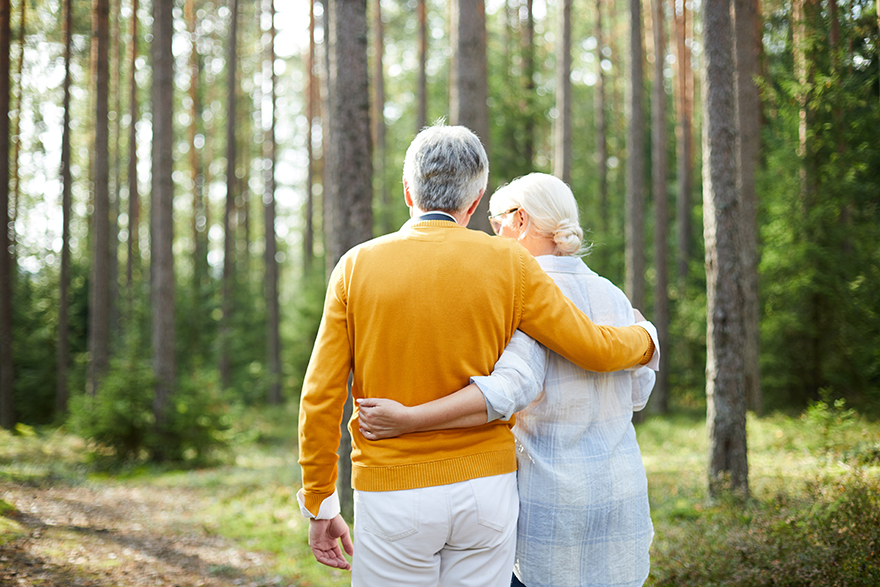Physical exercise is essential for keeping you healthy and maintaining your well-being. However, it is even more crucial for the elderly to be physically active and healthy. While there are concerns and limitations around the elderly involving themselves in physical activities, the benefits of maintaining an active and healthy lifestyle outweigh the risks. Seniors may take longer to heal or recover from injuries, but simple to moderate exercise can work for them.
Maintaining an active lifestyle for seniors provides various health benefits beyond the obvious such as longevity, mental wellbeing, and keeping away chronic diseases. So if you have a loved one living in care services, here is why you should encourage them to exercise often.
Exercising increases overall happiness and wellbeing amongst seniors
Taking part in any physical activities and staying active improves not only your physical health but also improves your mental health and overall wellbeing. Studies have shown that seniors who undertake regular exercises have a lower risk of developing anxiety or depression.
Additionally, being physically active boosts your pain tolerance and gives you added peace of mind. It also adds confidence in older adults that they can perform simple activities such as playing with the grandkids taking a walk to the store, or even grocery shopping. Not everything has to be done for them.
It improves muscle mass, bone density, and reduces the risk of falling.
As you age, you lose bone density, leading to osteoporosis. As you grow up, every ten years, your old bones dissolve, and new ones form, but as you grow older, the process slows down, and you find new bones are developing at a slower pace.
However, you can increase muscle strength and bone density with regular exercise. It will help reduce the risk of bone fracture and falling because exercise can also improve balance in seniors.
Exercises such as walking or jogging, which are weight-bearing, can help increase muscle strength and bone strength and reduce the risk of osteoporosis and bone fracture in case of falling. WHO also suggests that regular physical exercise reduces the risk of hip fracture in older adults by 40%.
Reduces the risk of chronic diseases
Physical exercise is great for your heart, whether you are young or old. Exercise helps prevent chronic diseases, mitigate diabetes, obesity, and heart disease, including the symptoms that accompany them. During cardiovascular exercises such as walking, cycling, or aerobics, blood flow to your heart increases, which reduces the risk of blood pressure and other coronary-related diseases.
Exercise can help fasten the healing process and improve brain function, preventing chronic diseases and the symptoms you are already experiencing. It helps manage any condition and helps stop further complications.
Remember to always check with your doctor about a new routine you wish to start if you have heart disease and you start experiencing dizziness or shortness of breath. However mild, if you have heart disease, some exercises may exacerbate the symptoms, and you may not be safe. Consult your doctor first.
Reduces the risk of developing Alzheimer’s and Dementia
Although aging adults are at risk of getting dementia, studies show that regular physical activity may reduce the risk of dementia in seniors.
A study on 700 seniors found that those who didn’t undertake daily exercise were twice as likely to develop Alzheimer’s than those who did exercise.
Increases independence in seniors
Studies examining physical exercising in older folks found that constant exercising improved balance and functional reach and reduced seniors’ fear of falling. Falls can be dangerous for seniors because they risk bone fractures or hip fractures.
Furthermore, seniors also experience a lot of alone time, leading to isolation and loneliness. Taking a walk around the park is an excellent way to catch up with friends and family or meet new people. This will kill all forms of boredom and loneliness, which greatly increases sociability and independence. It also helps improve the quality of life in an older adult.
It helps manage seniors’ body weight.
Exercise helps everyone maintain or lose bodyweight regardless of age. However, the human metabolism usually slows down with age, so the importance of doing exercise increases with age.
Doing strength training and cardio workouts helps you develop muscle mass and, therefore, increases metabolism and helps you burn calories, promoting weight loss and maintaining your body weight.
Type of exercises seniors can undertake to stay active
Just because you are older doesn’t mean you have to stop working out. However, ensure you consult your doctor before undertaking any new exercise regimen. You need to find a good exercise routine that’s perfect for avoiding any injuries or increasing any underlying conditions. Here are a few exercises you can try out:
Aerobics
It is recommended that seniors take an average of 30 minutes per day of aerobics or cardiorespiratory exercise. If done at a brisk pace, jogging, swimming, cycling, or walking all contribute towards getting your heart rate up. For beginners, you can spread out the thirty-minute workout into 10-minute sessions, then talking breaks in between.
If you are experiencing joint pain or have underlying conditions go for low-impact workouts like walking or cycling.
Strength training
Strength training is great for building muscles using repetitive motion exercises. Strength training routines can be done two or three times per week with the exercises focused on all the main muscle groups such as legs, arms, and the core.
Ensure you have a trainer to help. You wouldn’t want to injure yourself lifting weights that are too heavy. However, they are other strength training exercises that don’t require weights, such as sit-ups, wall sits, or pushups.
Stretching
Stretching is also essential because it warms up and cools down your muscles before or after cardio or strength training. Stretching improves flexibility which helps reduce the risk of injuries, improves your range of motion, and decreases muscle stiffness and soreness.
Some great examples of exercises perfect for flexibility are yoga, Pilates, Tai Chi. They are low-impact exercises on joints and increase flexibility.


